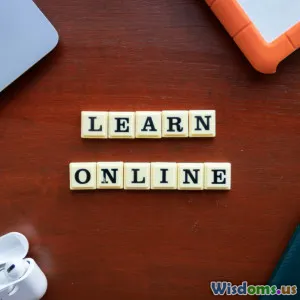
How Body Language Shapes Your Success in Presentations
13 min read Unlock the secrets of persuasive body language to captivate audiences and elevate your presentation effectiveness for lasting success. (0 Reviews)
How Body Language Shapes Your Success in Presentations
Introduction: The Unspoken Secret of Memorable Presentations
Imagine two presenters step onto a stage, each delivering the same words. One commands attention: their posture is poised, gestures purposeful, and eye contact magnetic. The other fidgets, avoids the audience's gaze, and seems withdrawn. Whose message would you remember?
Over 90% of communication is nonverbal, according to psychologist Albert Mehrabian's classic studies, highlighting that body language carries more weight than words alone. In the arena of presentations—where ideas must inspire, convince, or rally an audience—it’s not just what you say, but how you say it.
This article delves deeply into how body language shapes your success in presentations. You’ll gain a rich understanding, discover real-world cases and science-backed insights, and master actionable tips to harness the power of your presence.
The Science of Body Language: More Than Meets the Eye
Decoding the Nonverbal Alphabet
Body language encompasses a rich vocabulary of posture, gestures, facial expressions, eye contact, proximity, and even subtle micro-expressions. Psychology Today notes that these nonverbal cues fill the gaps words leave behind, shaping how a message is perceived and remembered.
- Posture signals authority or insecurity.
- Gestures underscore or undermine your content.
- Facial expressions mirror emotions and intent.
- Eye contact fosters connection and credibility.
For instance, Amy Cuddy, in her renowned TED Talk "Your Body Language May Shape Who You Are," demonstrated that 'power posing'—standing tall with open stances—could increase confidence and influence, both for the speaker and their audience. Her study found that just two minutes of power posing increased testosterone and decreased cortisol, making individuals feel more powerful and assured.
Nonverbal Communication in the Digital Age
With the rise of virtual meetings and webinars, does body language still matter? A 2020 Stanford study discovered that even through video, viewers react to presenters' nonverbal cues—facial expressions and visible gestures—affecting rapport and message retention. In fact, minimal movement or a lack of expressiveness in remote presentations makes messages less engaging and memorable.
Key Elements of Effective Presentation Body Language
1. Posture: Foundation of Presence
Your posture silently announces your presence before you begin. A straight back, relaxed shoulders, and balanced stance project assurance and respect. Slumped shoulders or crossed arms tell the audience you’re closed-off or uncertain.
Example: Steve Jobs at Apple keynotes often stood centered with an open posture, instantly establishing calm authority and focusing the room.
Tip: Anchor your weight evenly on both feet, stand tall, and relax your arms at your sides. This tells your audience you are confident and ready.
2. Gestures: Giving Your Words Shape
Intentional gestures illuminate your words, adding emphasis or illustrating ideas. Research from the University of Chicago shows that speakers who gesture while talking are seen as more engaging and competent.
- Describing a growth trend? Sweep your hand upward to visually underscore it.
- Outlining options? Use both hands to indicate “this OR that.”
Caution: Fidgeting with notes, hair, or jewelry can distract and dilute your authority. Keep gestures open, at chest level, and purposeful.
3. Eye Contact: Crafting Connection
The eyes truly are "the window to the soul," especially for presenters. Sustained, meaningful eye contact builds trust, draws listeners in, and increases information retention. According to a Harvard Business Review survey, 75% of professionals rate eye contact as "crucial for effective communication."
How to Master Eye Contact:
- Divide your gaze between audience sections (the ‘lighthouse method’).
- Hold eye contact for 3–5 seconds before moving on, instead of scanning back and forth rapidly.
- On video calls, look at the camera lens, not your own screen image.
Case Study: Oprah Winfrey frequently connects deeply with her audience by pausing and locking eyes—making each listener feel she’s speaking personally to them.
4. Facial Expressions: Feeling Fuels Understanding
A neutral or blank expression appears disengaged; mismatched emotions confuse. Enthusiasm, concern, surprise, or a warm smile clarifies your intent and helps audiences emotionally sync with your message.
Example: Simon Sinek, author of "Start With Why," often smiles when speaking about inspiration, or shows concern when addressing corporate failure—allowing the audience to follow his emotional journey.
Practice: Record your rehearsals and note if your face matches your content. Animated expressions captivate and humanize your message.
5. Proxemics and Movement: Owning the Space
How you use the stage or room also speaks volumes. Purposeful movement draws attention, yet excessive pacing can distract.
- Step forward on a key point for impact.
- Move closer to the audience for intimacy, or to the side to signal a transition.
Research published in the journal Personality and Social Psychology suggests that simply moving closer to audience members can drastically boost engagement and perceived approachability.
Virtual Tip: In remote settings, adjust your camera so your face and upper body are visible. Use hand or arm gestures within the frame.
The Power of Consistency: Aligning Words and Actions
Congruence between your spoken message and physical behavior multiplies impact. When there’s a mismatch, audiences trust body language over words—an instinct rooted in evolutionary psychology. This is encompassed in studies by Dr. Paul Ekman, who found that even trained interrogators pick up micro-expressions and subtle incongruities, signaling deception or hesitation.
Example: If you say “I’m excited,” but keep your arms folded, listeners sense nervousness or resistance—and may not believe your message.
Solution: Record your talks and check if your voice tone, words, and body all point in one direction. Authentic passion, openness, and honesty show in your movements.
Research-Backed Impacts: The Data Speaks
-
Retention and Recall: A study by the University of Southern California found that audience members retain 70% more information when presenters use effective nonverbal cues compared to when they rely solely on spoken words.
-
Persuasiveness: UCLA’s School of Communication concluded that nonverbal signals convey 55% of the impact in persuasive messaging in business presentations, compared with 38% for voice and just 7% for content alone.
-
Confidence Perception: In a 2017 LinkedIn survey, 64% of respondents said that a presenter’s confident body language made them more likely to trust and agree with the content.
Mastering Your Body Language: Actionable Steps
1. Prepare—Don’t Wing It
Rehearse not only your speech, but all physical aspects. Stand in front of a mirror, or record yourself. Observe posture, gestures, expressions, and then adjust for congruence and energy.
2. Start Strong
First impressions are shaped within seconds. As you walk up, keep your chin level, smile lightly, and make eye contact with the room. Even before words, your body language sets the tone.
3. Control Nerves
Nerves show up in jittery hands, bouncing feet, and rapid blinking. Calm your body: Practice breathing exercises and grounding techniques backstage. Amy Cuddy’s 'power poses' are famous for reducing pre-presentation anxiety.
4. Engage Your Audience
- Ask rhetorical questions: Lean forward and use palms-up gestures to invite thought.
- Highlight key points: Emphasize with a pause, step forward, and make strong eye contact.
- React to audience feedback: If someone smiles or nods, mirror back appreciation with a smile.
5. Adapt to the Setting
Big room? Larger, slower movements are needed. Virtual? Keep gestures within the camera’s frame and use intentional facial cues.
6. Get Feedback
Invite colleagues or a coach to critique your delivery. Tools like Toastmasters International or TEDx rehearsal sessions are excellent for developing nonverbal greatness.
Real-World Examples: Body Language Wins and Woes
Barack Obama—The Power of Intentional Pausing and Presence
President Obama’s signature oratorical style included deliberate pauses, upright posture, and controlled gestures. Even dissenting audiences often gave him high ratings for charisma, largely attributed to his nonverbal mastery.
The Fidgeting Keynote—When Body Language Sabotages
At a tech conference in 2019, a startup CEO’s shifting from foot to foot, minimal eye contact, and nervous fidgeting resulted in listeners disengaging, with many checking their phones. Audience feedback cited lack of confidence, though his slides and content were clear.
Susan Cain—Leading with Quiet Confidence
Author Susan Cain, famed for "Quiet: The Power of Introverts," exemplifies calm, gentle delivery. Yet her careful hand gestures, soft eye contact, and measured pacing build an authentic rapport and consistently receive high audience marks for trustworthiness and inspiration.
Body Language in Diverse Cultures: A Note of Caution
While some cues are universal—a smile, nod, or standing tall—others vary by culture. For example, in some Asian cultures, direct eye contact may appear aggressive, while Mediterranean audiences may expect intense gesturing.
Be mindful: Adapt your nonverbal communications if presenting overseas or to a diverse group, and research local norms for optimal impact.
Conclusion: Owning the Room (and the Screen)
Body language is the whisper that amplifies your words. It can project gravitas, foster trust, invite connection, and inspire action. From a CEO unveiling a new vision, a teacher capturing a classroom’s imagination, to an entrepreneur pitching for investment—success hinges on congruence between what’s said and how it’s shown.
The next time you step up to present—whether in a boardroom or behind your laptop camera—consider not just your message, but the invisible dance of presence you create.
The choices you make with your body language will shape not only how others see you—but how powerfully they remember, and act on, your words.
Call to Action: Start with small changes: Record your next presentation, and watch—for the first time, perhaps—what your body is saying. With every gesture, eye lock, and smile, you have an opportunity to transform mere communication into genuine, memorable connection.
Recommended Reading and Resources:
- Amy Cuddy: “Presence: Bringing Your Boldest Self to Your Biggest Challenges”
- Allan & Barbara Pease: “The Definitive Book of Body Language”
- Toastmasters International: toastmasters.org
Rate the Post
User Reviews
Popular Posts


















